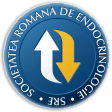
- Login
- Register
- Home/Current Issue
- About the journal
- Editorial board
- Online submission
- Instructions for authors
- Subscriptions
- Foundation Acta Endocrinologica
- Archive
- Contact
 Romanian Academy
Romanian Academy
 The Publishing House of the Romanian Academy
The Publishing House of the Romanian Academy

ACTA ENDOCRINOLOGICA (BUC)
The International Journal of Romanian Society of Endocrinology / Registered in 1938in Web of Science Master Journal List
Acta Endocrinologica(Bucharest) is live in PubMed Central
Journal Impact Factor - click here.

-
Endocrine Care
Bjekic-Macut J, Baltic T, Petrovic Nikolic T, Milanovic D, Brajkovic M, Brankovic M, Nikolic N, Klasnja S, Jovanovic M
Hemorrhagic Pheochromocytoma and Severe Carotid Stenosis: a Multidisciplinary Approach to Surgical PrioritizationActa Endo (Buc) 2024 20(4): 485-489 doi: 10.4183/aeb.2024.485
AbstractIntroduction. Pheochromocytomas are rare catecholamine-secreting tumors that may present with nonspecific symptoms or life-threatening crises. Spontaneous adrenal hemorrhage is a rare complication that complicates diagnosis, especially in patients with comorbidities. Case Report. A 68-year-old male presented with severe abdominal pain, a history of hypertensive crises, and episodes of syncope. Imaging revealed a retroperitoneal hematoma originating from the right adrenal gland. Biochemical evaluation confirmed pheochromocytoma, and further imaging showed 75% stenosis of the right internal carotid artery. A multidisciplinary team recommended right adrenalectomy prior to carotid intervention. After alphablockade with phenoxybenzamine, the patient underwent successful adrenalectomy and hematoma evacuation. Histopathology confirmed pheochromocytoma with hemorrhagic and degenerative features. Carotid artery stenting was performed postoperatively. Discussion. Hemorrhagic pheochromocytoma may mimic other acute abdominal or vascular conditions, especially in patients on anticoagulation. Noradrenergic pheochromocytomas are linked to a higher risk of atherosclerosis. In such complex scenarios, surgical sequencing must be individualized. Conclusion. In patients with hemorrhagic pheochromocytoma and significant vascular disease, early tumor resection followed by vascular intervention can reduce perioperative risks. A multidisciplinary approach is essential for optimal outcomes. -
Endocrine Care
Ataikiru U, Iacob R, Chirita-Emandi A, Galinescu M, Miron I, Popoiu C, Boia E
A 10-Year Study of Children with Gonadal Tumors and Disorders of Sex Differentiation, in RomaniaActa Endo (Buc) 2023 19(4): 487-496 doi: 10.4183/aeb.2023.487
AbstractContext. Children having gonadal tumors and disorder of sex differentiation (DSD) are rare. Objective. To investigate the presentation of DSD children with malignant gonadal tumors. Methods. A retrospective study from 2010- 2020, that evaluated 17 children with DSD, including 13 females, eight months to 16 years, with congenital adrenal hyperplasia, 5-alpha reductase deficiency, androgen insensitivity syndrome, Turner, Sywer, and Klinefelter syndromes. Results. Ten children had malignant gonadal tumor; nine had germ cell tumors and one person granulosa cell tumors, while seven children with non-malignant tumor had gonadoblastoma, cystadenoma (five children), and cysts. Systemic malformations, obesity, elevated tumor markers, and psychosocial issues were observed in 90%, 90%, 70%, and 50% of children with malignancy unlike 28.6%, 42.9%, 14.35%, and 57.1% children without malignancy respectively. Most (9/10) children >12 years, had psychosocial issues, unlike 0/7 children ≤12 years. From 8/17 children presenting with symptoms suggestive of tumor, 75% had malignancy, while from 9/17 children with DSD presentation, 44% had malignant tumors. Malignancy was observed in 3/10 children between eight months to age six, while 7/10 children had stage 1-2 tumors. We reported a child, identified as female, aged 13 years, with partial androgen insensivity syndrome (PAIS) 46,XY, and testicular papillary serous cystadenoma with genomic variant AR NM_000044.4:c.2750del. p.(F917Sfs*27) chromosome Xq12, never published in people with PAIS nor population databases (GnomAD). Conclusion. DSD diagnosis raises numerous challenges. People with DSD have increased risk of malignancy, especially when obesity and, systemic malformations are present; also, psychosocial issues in these children are associated with postpubertal age. -
Case Report
Matulevicius V, Ostrauskas R, Krasauskas V, Verkauskiene R, Ciaplinskiene L, , Urbanavicius V
Adrenal Androgen Producing Adenoma Associated with Epileptic SeizuresActa Endo (Buc) 2014 10(3): 487-494 doi: 10.4183/aeb.2014.487
AbstractBackground. Dehydroepiandrosterone sulphate (DHEA-S) is a major steroid product of adrenal glands and an important neurosteroid, but due to only slight androgenic activities pathology of DHEA-S secretion it was rarely described until now. Aim. To report a case of DHEA-S and testosterone secreting adrenal tumour with clinical manifestations of suddenly appeared epileptic seizures, amenorrhea, hirsutism, weight gain and decreased sexual activity before operation, and up to 12 months observation after surgical removal of the tumour. Methods. Presentation of clinical case with comments. Results. Epileptic seizures, amenorrhea, weight gain and hirsutism suddenly appeared in a 38-year-old fertile woman. A right adrenal tumour was detected. Blood levels of DHEA-S and testosterone were very high. Surgical removal of the adenoma (confirmed histologically) was performed what conditioned decrease of DHEA-S, testosterone and other hormones in 2-24 hours for the level of adrenal insufficiency. After a month all the hormones returned to normal level and were maintained at this level for 12 months after operation, excepting aldosterone, which increased gradually. Menses reappeared in six weeks after a short period of hot flashes and perspirations. Seizures did not appear in 12 months. Sexual activity was lowered one month before and after the operation, and it was maximal 6-12 months after operation. Conclusions. We report a case with complete recovery of a 38-year-old woman, presented with epileptic seizures, amenorrhea, hirsutism, weight gain and decrease of sexual activity, before and after surgical removal of DHEA-S and testosterone secreting adrenal tumour. -
Editorial
Virgolici B, Mohora M, Virgolici HM, Posea M, Martin RE
Hematological Indices Related to Vitamin D Deficiency in Obese ChildrenActa Endo (Buc) 2022 18(4): 488-493 doi: 10.4183/aeb.2022.488
AbstractIntroduction. Vitamin D is involved in differentiation and induction of erythropoiesis in bone marrow cells. Aim. We compared the serum 25(OH) vitamin D level in obese children versus control and found correlations between vitamin D level and hematological indices in obese children. Materials and methods. 25 overweight and obese patients and 15 normal weight children were enrolled in an observational study . Results. In obese children, the serum level of 25(OH) vitamin D was significantly (p<0.04) lower (20.60 ng/mL) compared with the value from normal weight ones (25.63 ng/mL) and the body fat percentage BFP was higher. We found a positive correlation (r=0.44, p<0.05) between serum vitamin D and hemoglobin level and a negative one between serum vitamin D and the number of platelets (r= -0.43, p<0.05). Also, the serum iron was at the lower normal limit in the obese children and negatively correlated with the percent of the body fat (r= -0,62, p<0.05). Conclusion. Obese children have vitamin D deficiency. The hemoglobin level and the number of platelets are correlated with the serum level of 25(OH) vitamin D. Supplements with vitamin D may have pleiotropic effects, including those on bone marrow activity. -
Endocrine Care
El-Ziny MA, Hegazi MA, El-Hawary AK, El-Sharkawy AA, Abd El-Rahman A, El-Sonn WA
Hormonal, sonographic, and body composition changes in egyptian adolescent girls with hyperandrogenic manifestationsActa Endo (Buc) 2009 5(4): 489-500 doi: 10.4183/aeb.2009.489
AbstractObjective. Hyperandrogenism is any clinical or laboratory evidence of androgen excess in women. This study was conducted to assess the prevalence of hyperandrogenic disorders especially polycystic ovary syndrome in a random sample of adolescent girls, as well as to identify the clinical, hormonal, ultrasonic, and body composition characteristics associated with such disorders. Patients and Methods. Two hundred school girls (15-18 years old) were selected by random sampling from different secondary schools, and screened for hyperandrogenic disorders by a validated questionnaire and subjected to thorough confirmatory investigations. Results. Twenty-five out of the 200 students were thoroughly evaluated. Eighteen adolescents of the examined students (72%) were finally diagnosed with polycystic ovary syndrome, 5 (20%) with idiopathic hyperandrogenism and 2 (8%) with non-classic congenital adrenal hyperplasia . Despite normal weight percentiles and body mass index for age and sex in 83.3% and 88.9% of students with polycystic ovary syndrome respectively, fat mass, trunk fat percentage, trunk fat mass, and trunk free fat were significantly higher in polycystic ovary syndrome patients compared to controls. Conclusions. Polycystic ovary syndrome was the most common hyperandrogenic disorder in this study. Combined menstrual dysfunction and clinical hyperandrogenism had adequate sensitivity and high specificity in the prediction of polycystic ovary syndrome. Pulse inversion harmonic imaging is an adequately sensitive preferential diagnostic tool of polycystic ovary syndrome in virgin adolescents who may have central adiposity. Body composition assessment by bioelectrical impedence is valuable in detecting central adiposity which could be correlated to parameters of insulin resistance. -
Endocrine Care
Aysan E, Korkmaz YY, Hacihasanoglu E
A New Method for Intraoperative Definitive Diagnosis of Inadvertent Parathyroidectomy During Central Neck DissectionActa Endo (Buc) 2024 20(4): 490-493 doi: 10.4183/aeb.2020.490
AbstractBackground. The most serious complication of central neck dissection (CND) is inadvertent parathyroidectomy. There is no definitive method for intraoperative diagnosis of this complication. Method. We studied on CND indicated 17 thyroid cancer patients (14 female, 3 male, age range: 21-67, mean age: 43.4). The excised CND material was kept in 50 ml of normal saline for 30 minutes. A 2 ml sample was taken from this fluid and sent to biochemistry for rapid parathyroid hormone (PTH) measurement. Results. PTH values were <10pg/mL in 14 patients. PTH values of three patients were very high (112pg/mL, 167pg/mL, 210pg/mL respectively). When the excised tissue in these patients was evaluated intraoperatively with loop glasses, one parathyroid tissue was found in each of the three cases and these were auto-transplanted intramuscularly. After this procedure we kept CND tissue material again in another normal saline of 50mL in 30 minutes and PTH was measured. The values came back as <10pg/mL. No parathyroid gland was found in any case in the postoperative routine histopathological evaluation. No patient had symptoms of hypocalcemia during the eightweeks postoperative follow-up. Conclusion. Inadvertent parathyroidectomy due to CND is a serious complication. This complication can be prevented with the simple method we recommend here. -
Endocrine Care
Galkine A, Dzenkeviciute V, Sapoka V, Urbanavicius V, Petrulioniene Z, Brimas G, Laucevicius A
Effects of Body Weight Reduction on Arterial Stiffness and Endothelial Function after Bariatric Surgery in Morbidly Obese Patients: A 4-Year Clinical StudyActa Endo (Buc) 2018 14(4): 491-497 doi: 10.4183/aeb.2018.491
AbstractObjective. To determine the long-term effect of weight loss on arterial stiffness, metabolic parameters in morbidly obese patients who underwent laparoscopic adjustable gastric banding (LAGB). Subjects. Forty-eight morbidly obese Caucasian subjects underwent LAGB from January 2009 to January 2010 and completed 4 years follow-up. Measurements. Patients were evaluated for body mass index (BMI), waist circumference, arterial blood pressure (BP), metabolic factors: leptin, adiponectin, glucose, glycated haemoglobin (HbA1c), insulin. Endothelial function - evaluated as reactive hyperemic index (RHI). Arterial stiffness - determined by cardio - ankle vascular index (CAVI). Results. Average BMI decreased from 46.48±7.06 kg/m2 to 39.78±7.36 kg/m2 (1year, p<0.001) and 37.29±7.49 kg/m2 (4years, p=0.012). The systolic BP and heart rate reduction were observed after the 4 years. Changes in cardiovascular parameters were accompanied by waist circumference reduction and improvement of glucose metabolism,reduction of insulin, HbA1c, leptin, C-reactive protein values. However, there were statistically significant increases in CAVI 6.58±1.77m/s vs. 7.03±2.00 m/s (p=0.014) at 1 year, but not significant 7.12±2.19 (p=0.153) after 4 years. Endothelial changes were observed only in diabetic patients one year after LAGB 2.18±0.57 vs. 1.86±0.34 (p=0.021) vs. 2.05±0.42 (p=0.086). Conclusion. Weight reduction induced by LAGB was associated with changes in body weight and metabolic parameters, but it was no improvement on endothelial function and arterial stiffness. -
Images in Endocrinology
Kocak M, Nuhoglu I, Mungan S, Duman P, Coskun H, Turkyilmaz S
Bilateral Adrenal Myelolipomas Secondary to Congenital Adrenal Hyperplasia: A Rare Case of Typical Asymmetrical 18F-FDG AvidActa Endo (Buc) 2016 12(4): 491-492 doi: 10.4183/aeb.2016.491
Abstract- -
Endocrine Care
Kaya C, Bozkurt E, Turkyilmaz Mut D, Mihmanli M, Uludag M
Which Factors are Associated With Malignancy in Thyroid Nodules Classified as Bethesda Category 3 (Aus/Flus) and how Do They Influence the Patient’s Management?Acta Endo (Buc) 2019 15(4): 491-496 doi: 10.4183/aeb.2019.491
AbstractBackground. Thyroid nodules are a common pathology worldwide. Fine needle aspiration biopsy (FNAB) is an important diagnostic method for the investigation of malignancy in thyroid nodules. However, according to the Bethesda System used to classify the results, patients with atypia of undetermined significance/follicular lesion of undetermined significance (AUS / FLUS) may not be classified as benign or malignant. Therefore, it may be necessary to determine some clinical risk factors to apply the best treatment in these patients. Aim. To determine the factors that increase the risk of malignancy in this patient group. Methods. A retrospective study including 138 patients with an FNAB categorized as AUS/FLUS and operated between June 2015–September 2018. Demographical, Laboratory (TSH) and Ultrasound variables (number, size and characteristics of nodules) of the patients were compared among postoperative histopathological results. Results. Hypo-echoic structure, microcalcification and irregular margin of the nodules were detected to be associated with malignancy in patients with FNAB results of AUS/FLUS (p <0.001). Conclusion. We suggest that surgical treatment should be considered if the patients have nodules with the hypo-echoic structure, microcalcification and irregular margin with an FNAB histopathological result of AUS / FLUS. -
Case Report
Ognean L, Boanta O, Visa G, Grosu F, Sofariu C, Gafencu M, Matei C, Iurian S
Hydrocephaly, Schizencephaly, Spondylocostal Dysplasia, and Hypoparathyroidism in an Infant of a Diabetic MotherActa Endo (Buc) 2017 13(4): 494-501 doi: 10.4183/aeb.2017.494
AbstractContext. Diabetes mellitus is the most frequent chronic complication in pregnancy and continues to contribute to increased perinatal morbidity and mortality in newborns. Macrosomia, respiratory distress syndrome, metabolic and electrolytic disturbances, and increased rates of congenital structural defects are well-known neonatal complications associated with maternal diabetes, even if well-controlled. Case report. A macrosomic infant born from an insulin-dependent mother, with uncontrolled diabetes and lack of adequate prenatal care, prenatally diagnosed with hydrocephaly showed a complicated postnatal course. Initial respiratory distress syndrome and transient hypoglycemia, rapidly corrected under treatment, were followed by persistent hypocalcemia and hyperphosphatemia due to hypoparathyroidism and evolving hydrocephaly. Ventriculoperitoneal shunting was followed by resolution of hypocalcemia, but seizures associated with schizencephaly and recurrent respiratory tract infections, aggravated by spondylocostal dysplasia, concurred to infant’s demise at the age of 5 months. Conclusions. The reported case is rare due to multiple aspects: persistent hypoparathyroidism, uncommon association of schizencephaly, and even rarely association with spondylocostal dysplasia, all these conditions requiring a multidisciplinary therapeutic approach. Also, the reported case is evocative for challenges associated with infants born from diabetic mothers.